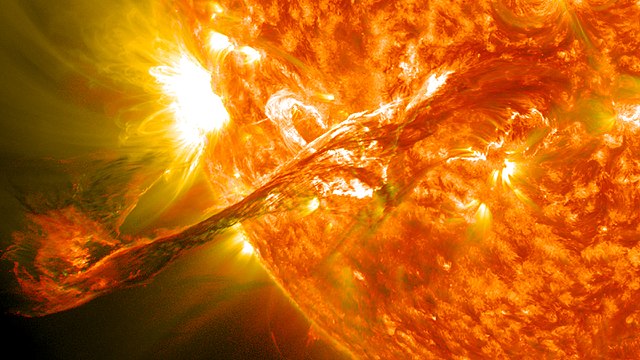Calculating the residual Signal
In my last post, I started to analyze Dip d792 in detail. But my work was suspended due to a very exciting new dip that has been observed in May 2017.
The first part is here A deep dive into Dip 792 part I.
Mathematical description
The remaining signal might be the result of a fog cloud, that is in an orbit around the star.The intensity of this cloud could be calculated if we subtract from the measured signal from Kepler the basic dip. If we choose the timing of the symmetric axis a little bit shifted, to take into account the cloud in the area of the peak of the dip, we find two very smooth exponential decays, as shown in the next graph:
 |
The remaining signal shows two exponential growth factors.
(missing data points are marked with black dashed circle lines)
|
Let's look into the details of the plot:
All data are relative to the central peak in a convenient time scale t = t_k-792.740 d (Zero is at the peak of dip 792)
- The raw dip data from Kepler are marked as black vertical x marks.
- The assumed basic dip is presented as a black line and is the mirror of the right half of the dip, not shown in this plot, both data rows use the left linear scaling.
- The remaining density is shown in a logarithmic scaling as shown at the right axis. The first part with very noisy data is presented as grey dots and not further processed.
- The middle part is presented by violent squares and can be approximated by an exponential function with a starting value of 0.022 and a growth factor of tau1 = 0.5298 per day.
This part changes obviously the direction at t = -0.633 d to a steeper growth with a growth factor of tau2 = 1.6655 per day, presented as green x marks.
Both approximations have a very high coefficient of determination, R² = 0.9809 for the first part, which has more noise and R² = 0.9953 for the second steep part.
Here comes a high zoomed plot of the second steep part:
 |
| The measured signal x marks and the calculated function as circles match in the time range -0.6d to 0.2 day within 0.1% as shown as vertical x marks in the center. |
It should be mentioned, that the ratio between the growth factors is 3.143... for whatever reason. (I think it is by pure chance because any intelligent species would use 2 * PI = 6.28... to signal their math level).
But beside this strange coincidence, the exponential decay could have some physical reason. It might be, those dust particles stick together, brightening the "dust" in the orbit.
The two different growth factors may result from two different processes with different efficiency.
Has anyone seen something like this in a comet tail?
Thank you for your attention and give me feedback if you have any comments on this.



























